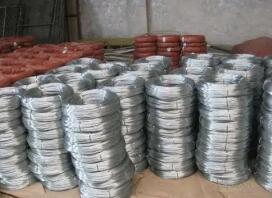Understanding 12 Gauge Binding Wire A Comprehensive Overview
Binding wire is an essential tool in various industries, including construction, gardening, and manufacturing, and among the different specifications of binding wire available in the market, the 12 gauge binding wire stands out due to its versatility and durability. This article delves into the features, applications, and benefits of 12 gauge binding wire, providing a comprehensive understanding for both professionals and DIY enthusiasts.
What is 12 Gauge Binding Wire?
The term 'gauge' refers to the thickness of the wire, with a lower gauge number indicating a thicker wire. A 12 gauge wire has a diameter of approximately 2.06 mm (0.081 inches), making it robust enough for a variety of applications. Binding wire is generally made from high-quality steel, which can be coated with materials such as copper or galvanized zinc to enhance corrosion resistance.
Features of 12 Gauge Binding Wire
One of the key features of 12 gauge binding wire is its high tensile strength, which allows it to withstand considerable pressure without breaking. This makes it particularly effective for tasks requiring durability, such as securing heavy objects or supporting structures in place. Additionally, 12 gauge binding wire is relatively flexible, allowing for easy manipulation into various shapes and configurations.
The wire is also designed to be rust-resistant, especially when galvanized, which extends its lifespan, making it suitable for outdoor use in gardens, construction sites, and industrial applications. Its smooth texture ensures that it won’t snag or cause damage to the materials it is binding.
Applications of 12 Gauge Binding Wire
12 gauge binding wire

12 gauge binding wire is widely used in several applications. In the construction industry, it is often utilized for tying rebar in reinforced concrete structures. Rebar needs to be secured firmly, and 12 gauge binding wire provides the necessary strength to keep it in place.
In horticulture, gardeners often use binding wire for supporting plants, creating trellises, or binding plant stakes together. Its flexibility allows gardeners to shape it as needed, providing support that is both effective and unobtrusive.
Another common application is in the manufacturing sector, where it can be found in packaging, securing materials together, and even in creating products like wire racks and displays. The provided stability ensures that products remain intact during transportation and handling.
Benefits of Using 12 Gauge Binding Wire
One of the main benefits of using 12 gauge binding wire is its strength-to-weight ratio. While it is heavier than thinner gauges, its robust nature means that less wire is often required for the same application, which can lead to cost savings. The durability of the wire also means it can be reused in various applications, further enhancing its value.
Additionally, using 12 gauge binding wire can improve efficiency in both professional and DIY projects. Its ease of use makes it accessible to individuals at all skill levels. Whether you’re tying together materials for a construction project or crafting in your workshop, 12 gauge binding wire offers reliability that can enhance project outcomes.
Conclusion
12 gauge binding wire is a powerful ally across numerous fields, providing strength, flexibility, and durability for a variety of applications. Its versatility makes it suitable for both professional contractors and hobbyist gardeners alike. With features designed for enhanced longevity and reliability, 12 gauge binding wire remains a staple in the toolkit of those who value quality and efficiency in their projects. Whether you're working on a construction site, tending to a garden, or engaging in creative DIY tasks, integrating 12 gauge binding wire into your work will undoubtedly yield positive results.

















